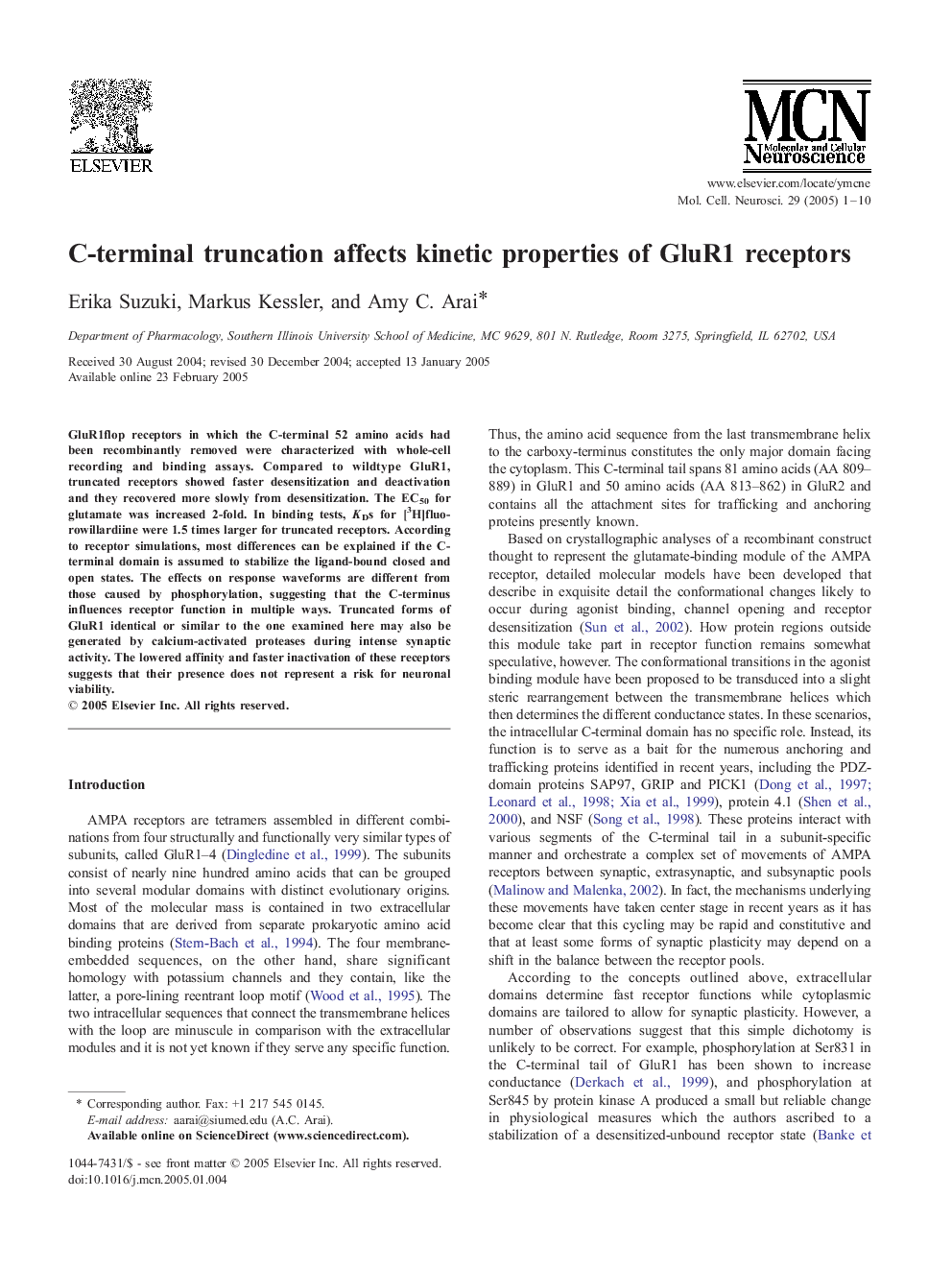| Article ID | Journal | Published Year | Pages | File Type |
|---|---|---|---|---|
| 10956899 | Molecular and Cellular Neuroscience | 2005 | 10 Pages |
Abstract
GluR1flop receptors in which the C-terminal 52 amino acids had been recombinantly removed were characterized with whole-cell recording and binding assays. Compared to wildtype GluR1, truncated receptors showed faster desensitization and deactivation and they recovered more slowly from desensitization. The EC50 for glutamate was increased 2-fold. In binding tests, KDs for [3H]fluorowillardiine were 1.5 times larger for truncated receptors. According to receptor simulations, most differences can be explained if the C-terminal domain is assumed to stabilize the ligand-bound closed and open states. The effects on response waveforms are different from those caused by phosphorylation, suggesting that the C-terminus influences receptor function in multiple ways. Truncated forms of GluR1 identical or similar to the one examined here may also be generated by calcium-activated proteases during intense synaptic activity. The lowered affinity and faster inactivation of these receptors suggests that their presence does not represent a risk for neuronal viability.
Related Topics
Life Sciences
Biochemistry, Genetics and Molecular Biology
Cell Biology
Authors
Erika Suzuki, Markus Kessler, Amy C. Arai,
